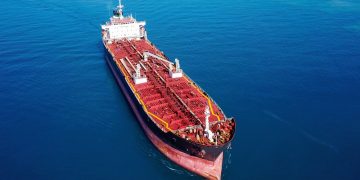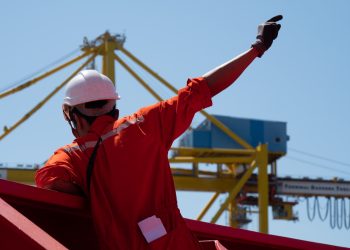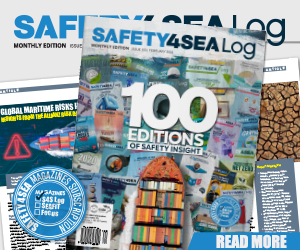During the 2019 SAFETY4SEA London Forum, Captain Mark Bull, Principal, Trafalgar Navigation, noted that as an industry, when it comes to navigation safety there is no industry wide leading indicator system; Surprisingly, the ISM Code does not even mention navigation.
Was navigation important 500 years ago? You bet your life it was.
It represented power and influence, wealth and riches.
Is navigation important today?
I say it has become unimportant. And that lies at the root cause of so many navigational accidents.
The consequences of some noteworthy navigational accidents are:
- 1912 the Titanic hit an iceberg, and sank with the loss of 2,000 lives. It became the forerunner for the SOLAS convention.
- 1987 a tanker collided with the Dona Paz, 4,387 lives were lost, the worst maritime peace time disaster. What lessons were learnt from this? I don’t know.
- 2012 the Costa Concordia incident occurred. Only 33 lives were lost. But it caused $3.5 billion just to remove the wreck.
- 1980 the British bulk carrier ‘Derbyshire’ sunk in a typhoon. 44 lives were lost.
- 2015 El Faro sank in a hurricane of Florida.
We base navigation safety on lagging indicators. We wait for the incident to happen, conduct an investigation, we circulate the report as lessons to be learned; however, that fails as these reports are not available for the very people that need to read them.
A leading indicator is a measure preceding or indicating a future event used to drive and measure activities carried out to prevent and control incidents.
Unfortunately, we have no leading indicators for navigational safety.
Some would point to the ISM Code, but I say that the ISM Code does not even mention navigation. How is that possible when it’s meant to be for the safety operation of ships where navigation is the single most important discipline that they use.
Perhaps, because a company or flag or insurance company has a good year with no navigational incidents of note, there is a feeling that everything is OK. Little need for the CEO to become involved, until the big one happens.
The US Navy had two incidents in one year, but everybody holds the navy in a high esteem. The US Navy’s reaction to these incidents was swift. There were several high-ranking officers dismissed from the navy.
What about regulations?
Are they keeping pace with navigation as it is being practiced today?
Is it changing with the technical and logical advances that are being made?
And is it changing with public perception? Would the public accept another ExxonValdez or another Costa Concordia today?
Would the public turn around and say what are you doing about it?
The recent issues with the Boeing 737 Max should give us some cause for concern. The pilots had no instructions on how to override the automation in the aircraft with the loss of two aircraft and all lives onboard.
A similar situation exists on ships’ bridges.
We have marvellous technology. This new ECDIS is brilliant. But people onboard the ship need to know how to use it properly and not be confused with being asked to use old techniques on the modern equipment.
Rather than lining up and reject the modern equipment, we should be walking towards positive alternatives.
So, dangerous assumptions and why are we not doing anything?
- This situation has developed through a series of “Dangerous Assumptions” :
- “We have never had a navigational incident for x years and therefore our navigational standards must be good”.
- “Our ship is new and has all the most modern navigational equipment and therefore will not have an accident”.
- “We have done a full investigation and published our findings”
- “Our crews have undergone the best training possible”
- “Our ships are fully in Class”.
- “Of course, navigation is covered in shipboard operations”.
- “Our ships received ‘nil defects’ at Flag State / Port State control.
- “We only have big ships and they aren’t affected in bad weather”.
In brief, navigation is “under the radar” and nobody is measuring all the elements, which combined, contribute to make it safe.
Is it about money alone?
- Costa Concordia wreck removal cost 1.5 Billion USD.
What navigation measures followed this incident? Zero.
It needs to involve the top.
In a briefing on bridge watchkeeping in 1993 Captain Peter Boyle said:
Like all human endeavour, the intention to set good bridge watchkeeping standards has to start at the top, that is the chairman of the company or the commander-in-chief. If they are in the shipping business they must give support to the process which most protects their assets. It is foolhardy and irresponsible not to do so.
So, if I was looking at the UK flag administration? The person at the top is the secretary of state for transport. That’s how high it needs to go for something to happen.
Why is it not reaching there? I believe It is because there’s a block in the middle management of any company involved in shipping, be it owner, manager, charterer or insurance; somebody is not sending the message to the chairman.
Above text is an edited version of Captain Mark Bull’s during the 2019 SAFETY4SEA London Conference.
You may view his presentation here:
The views presented hereabove are only those of the author and not necessarily those of SAFETY4SEA and are for information sharing and discussion purposes only.
About Capt. Mark Bull , Principal, Trafalgar Navigation
 Capt. Bull commenced his career in 1970 as a cadet with P&O S.N. Co. He spent the next 27 years at sea, with a 2 year sabatical in the late 1980s when he trained, qualified and practiced as a techer of English as a 2nd language. After 5 years in command, he came ashore qualified as an ISM and ISO lead auditor and joined a large ship management company ending up as the QM/DPA for a large fleet and 3 offices. After a brief spell as a consultant, he then moved to London where he became the Loss Prevention Manager of an IG P&I Club. Since 2012, he has been an independent consultant and has now started his own company Trafalgar Navigation dedicated to Navigational Audits, Assessments and Inspections.
Capt. Bull commenced his career in 1970 as a cadet with P&O S.N. Co. He spent the next 27 years at sea, with a 2 year sabatical in the late 1980s when he trained, qualified and practiced as a techer of English as a 2nd language. After 5 years in command, he came ashore qualified as an ISM and ISO lead auditor and joined a large ship management company ending up as the QM/DPA for a large fleet and 3 offices. After a brief spell as a consultant, he then moved to London where he became the Loss Prevention Manager of an IG P&I Club. Since 2012, he has been an independent consultant and has now started his own company Trafalgar Navigation dedicated to Navigational Audits, Assessments and Inspections.



































































ISM Code is a high level regulation. As stated Shipboard Operations covers navigation policy of the company . It is true that success is being measured by absence of incidents (lagging indicators) rather than leading indicators. Navigation is a dynamic activity which at times deals with emergent risks. Work as planned differs from work as done. Therefore ‘proceduralization’ of this dynamic activity beyond policy is not possible. It is for this reason mariners receive intensive training in navigation- theory as well as practical training.
Truly said. To the point. Role of DPA and qualification to be reviewed. People acting as DPA of shipping companies without any knowledge of real life of shipping